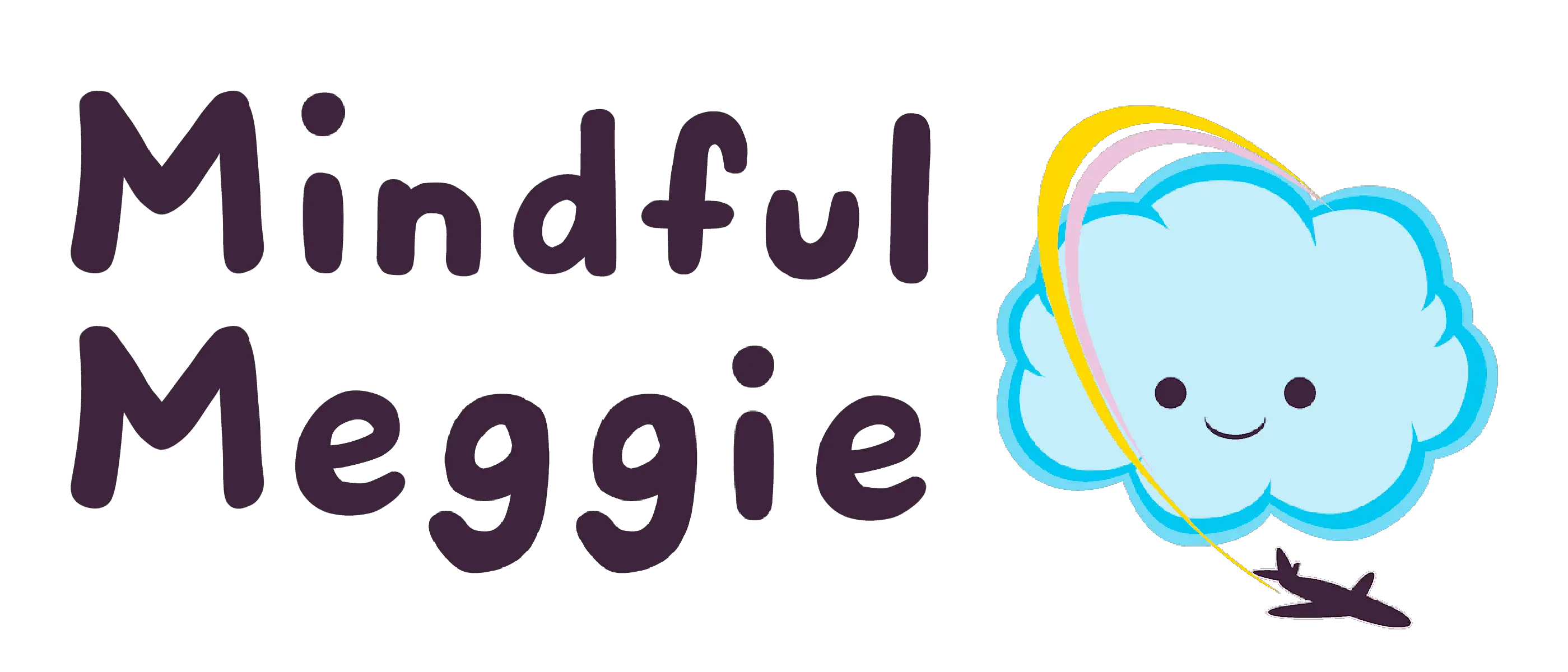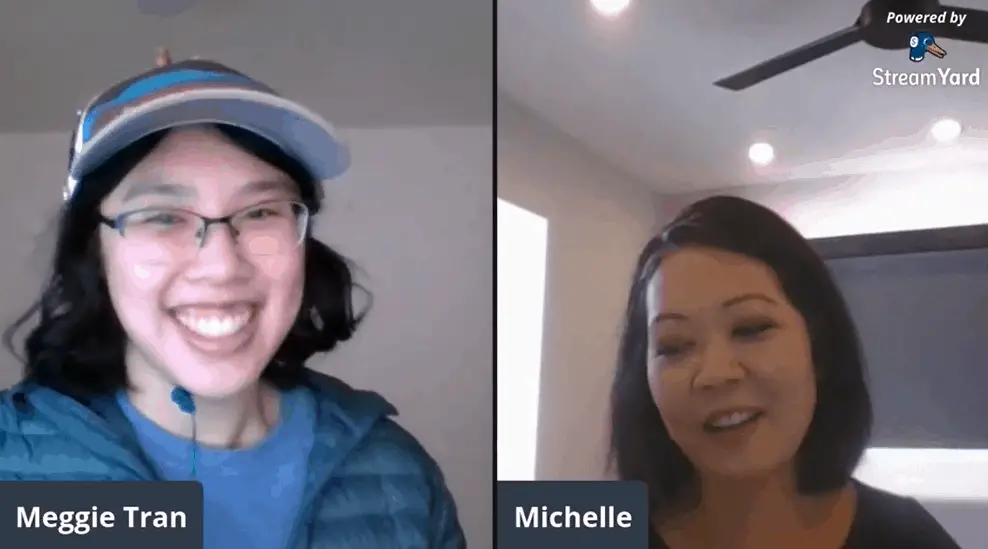
Updated: April 17, 2022 | Posted: May 7, 2021
“Anxiety Hack | Calm Toolbox” is the most watched YouTube video from the mindfulness meditation app, Calm. This simple one-minute video about staying grounded to your five senses is nearing 14 million views.
Seeing mindfulness being resorted to quick hacks saddens me.
Behind these Western mindfulness commodities are marketing and money, which focus on promising end goals for its customers. “Get our app, buy a subscription, and feel better right away!”
Most people focus on end goals — and love, love, love quick, easy fixes towards them.
I once saw someone on social media say, “I’ve been using a meditation app daily. WOW, I feel so relaxed now!” as if they needed to announce how they’ve achieved their end goals to the world.
With mindfulness, people want a convenient meditation tool that makes us feel better, relax, reduce our anxiety, and get more restful sleep.
But the marketable benefits of mindfulness are by-products, not end goals.
Mindfulness has never been a tool to feel better and numb away our problems.
Mindfulness is the state of being present in the moment, without being tugged away by past woes or future worries. You are fully aware of your internal environment when nonjudgmentally observing the presence of any thought. You are also aware of your external environment, including the place you are in and the action you are taking.
Mindfulness may be a trend in modern society today, but it stretches back thousands of years, with roots in Hinduism, Buddhism, and traditional Asian cultures.
Hinduism doesn’t get enough recognition for mindfulness. As early as 2300 B.C., Hindu followers in the Indus Valley, near today’s Pakistan, studied texts and yoga forms that embraced the essentials of mindfulness, including acceptance, meditation, and contemplation.
Between 400-500 B.C., the Buddha, also known as Siddhārtha Gautama, created the foundation for Buddhism in India. Awareness of the present moment is the core of this religion. Being mindful attains a greater state of consciousness and brings its followers to enlightenment.
Mindfulness only entered the Western mainstream when in the 1970s, Vietnamese Zen Buddhist Thich Nhat Hanh made mindfulness accessible to all audiences with his literature. Meanwhile, Dr. Jon Kabat-Zinn, a professor from Massachusetts, implemented it into a science-based stress reduction program in the medical field for patents.
Mindfulness’s fusion with science helped it spread in the Western world. Many people received the psychological benefits of mindfulness, which includes a greater active awareness of one’s thoughts that replaces a passive reaction to them. Many therapists have used mindfulness in their treatments.
The mindfulness momentum has gone beyond the psychologist’s office and into a daily recognition. Maybe you’ll come across a self-help book that recommends being mindful. Perhaps your workplace or school has a session on mindfulness. Or you could just find one of your family or friends talking about the practice.
The benefits of mindfulness are for everyone. Anyone can adopt mindful living, with or without religion. But please respect its Asian origins. I don’t want it to be whitewashed and exploited as a cultural appropriation in the Western world.
If mindfulness has survived for thousands of years and spread outside Asia, it really does make a difference in people’s lives!
Mindfulness is a lifestyle. We don’t stop being mindful when our dedicated meditation session ends.
A mindful person embraces wholesome, thoughtful living, has a heightened awareness, and focuses on the present moment.
Look no further than one of the Asian roots of mindfulness: Zen Buddhist monk Sen no Rikyu’s Japanese tea ceremony, called Cha-no-Yu. Tourists in Japan get hyped about this popular cultural tradition all they want, but they must have patience. The ceremony stretches on forever! The preparation, sitting down, tea brewery. If someone hands us a cup of tea, most of us would want to get it over with by gulping it down, then move on to the next thing occupying our minds.
But the tea ceremony teaches us to respect and enjoy the process of having a cup of tea. Sure, it can reduce our anxiety and make us feel relaxed, but those are by-products beside the point.
According to Dr. Tamami Shirai, a lifestyle medicine researcher at the University of California, San Diego, many Asians have traditionally carried out their daily lives in mindfulness without even trying.
Even the most mundane rituals are done with mindfulness: washing the dishes, driving to work, waiting in line at the grocery store, eating a plate of frozen blueberries. Mindful living concentrates not on finishing these things, but the actual work in the process.
But a lot of us, especially if we live in modern Western lifestyles, mindlessly whiz through these things, eager to get stuff done and move on. Living like that, we’re never really living because our hectic thoughts drive us to aim for somewhere other than now. We keep running without living.
When we live as though our busy schedules are chasing us all the time, we don’t even remember that we are alive and breathing in each moment. Mindfulness helps us become more aware that we are a living human being. That’s why many meditation practices focus on the breath, body scanning, and use the five senses to observe our surroundings.
By being mindful, we simply enjoy being alive, appreciate everything around us, and become more thoughtful about what we’re doing.
When I eat my daily frozen blueberries, I savor the organic sweetness and thank the sun, soil, farmworkers, truck drivers, and Costco for making it possible. I even think about how I’m absorbing the sun’s energy through these blueberries. I only exist because of the sun and earth. Any relaxation that I feel is a by-product. My true intention lies in my wholesome understanding of life and relishing the present.
Contrary to popular Western belief, mindfulness not only welcomes the good things in our lives but also the bad.
Especially the bad!
Mindfulness doesn’t numb us by silencing the painful feelings and thoughts in our minds — it exposes us to them.
We want to believe mindfulness is about a quiet mind. But it’s the total opposite — it can get noisy in our heads, even when performing a quiet meditation.
But we welcome the noise.
It’s difficult though, especially for the beginner, because we tend to avoid our bad thoughts and feelings out of fear.
But by being aware of them, we prove that we aren’t scared and can make peace. Running away will only make us more fearful.
The Miracle of Mindfulness by Vietnamese Zen Buddhist monk, Thich Nhat Hanh, describes in detail the decaying body of a dead human. The mindless among us would want to turn away and stop thinking about a disgusting image. But being mindful of this body means welcoming the gross feelings, overcoming them, and accepting death as natural. Death isn’t as scary as our thoughts and emotions have put it.
This also goes for other painful, thoughts, emotions, and judgements that comes conscious to us anytime, whether we’re in the middle of a taxing life problem or doing nothing besides sitting still on our sofa. Lots of thought content can exaggerate the truth or make zero sense. They can overwhelm us unless we take them on with mindfulness. We train our brain how to accept their presence in our minds and let them pass, as fleeting as fat clouds in a bright blue sky. Mindfulness toughens us up against this thought content, building our resolve, resilience, and antifragility.
As a result, being mindful helps us put things into perspective and act on life problems with grace, calmness, confidence, wisdom, even speed. Letting our minds run amok is useless.
Let’s say while I’m browsing my Instagram page, out of nowhere, I get upset because my follower number is lower than most content creators in the travel blogging community.
Instead of mindlessly believing the emotion (Everyone is better than me. I suck at social media!), I can pause and call out the emotion, which will prevent it from taking over my mind and resulting behavior. Once I am aware of the emotion’s presence, I can clasp my hands together, remember that the process matters more than the end goal, and get back to posting.
Many of our thoughts, judgements, feelings, and emotions are random, meaningless fluff. They manifest without our conscious decision. But we can still recognize them for what they are, lead a mindful lifestyle, and tap into our living, breathing moment in the present.
In the face of inevitable problems, notice how wise and strong you’ve become!
It’s okay to practice mindfulness in dedicated meditation sessions, whether you are plopped on a pillow doing a short breathing exercise by yourself or following lectures from a mediation app. But consider these as your gateway to a mindful lifestyle. Don’t limit your mindfulness to short-lived techniques.
There’s no right or wrong technique, either.
Mediation apps and yoga bore me out, so I never do them.
On some mornings after waking up, I’ll spend a mindful minute sitting quietly on my bed. Sometimes at night, I will consciously scan my body from head to toe for a few minutes. That’s really all the time I dedicate to full-on meditation practice.
I don’t need dedicated sessions because my life depends on being mindful every waking moment, considering I live with obsessive compulsive disorder (OCD), social anxiety, and intergenerational trauma. From my therapist and select books, I’ve learned how to adopt mindful living while having chronic mental illnesses.
When learning about mindfulness in a general sense, I love learning from books, whether it’s The Mindfulness Essentials by Thich Nhat Hanh (gentle and sweet) or Everything is F*cked by Mark Manson (not so gentle and sweet)!
Even certain films, indie meditative documentaries called Baraka and Samsara, inspired my mindful living, with their intricate soundtrack and contemplative scenes captured all over the world. They stay on certain shots for a long time because the viewer is the narrator who interprets them in their own mind. That’s why no narrator voiceover is teaching you anything. (For your information, these are my favorite movies of all time. Hollywood can get outta here)!
Whatever you choose, never forget the point of being mindful: to live with intention throughout your day, month, year, and lifespan.
If you hack your way through mindfulness, you’ve missed the entire point. Stop favoring the end goal. We spend far more time in the process — so enjoy it.
***
BONUS MATERIAL! Here are the books and movies that have helped me adopt a mindful lifestyle:
How to Relax, by Thich Nhat Hanh
This was my first book on mindfulness, and it should be yours, too! Nhat Hanh guided me through accessible and peaceful exercises on relaxation without making it an end goal. He uses short anecdotes to emphasize how important it is to be mindful throughout the day. This convenient pocketbook has been condensed into short paragraphs, making this an easy read. There’s even sumi-ink illustrations to complement the text. I would highly recommend this book to start leading your life with mindfulness. Then, you can pick up other titles in Nhat Hanh’s Mindfulness Essential pocketbook series, including, How to Fight and How to Love. Buy on Bookshop | Buy on Amazon
The Miracle of Mindfulness, by Thich Nhat Hanh
This bestselling book was an important catalyst that helped introduced mindfulness to the West in the 1970s. Not only did Nhat Hanh teach me breathing exercises and meditation sessions, he explained why I should be mindful throughout the day. There is no right time and place to be mindful. Although we can do some dedicated mindfulness medication exercises to practice, it is only when we act with intention in all areas of life that we are mindful. Do yourself a favor and pick up this wise book! Buy on Bookshop | Buy on Amazon
Everything is F*cked, by Mark Manson
Manson’s book highlights the negativity we face in our lives, including painful situations and emotions. I better understood how futile it is to try controlling the thoughts and emotions that our brains manifest. Instead, I learned to focus on accepting their inevitability. Sitting through the painful emotions, I can harness them into emotional resilience and antifragility. Chapter 7, Pain is the Universal Constant, is my favorite part. Manson talks about Buddhist monk Quang Duc’s suicidal political protest that sparked a shift in a chaotic, 20th-century Vietnam. Quang Duc didn’t even flinch because his mindful living toughened his mind. I am not saying to burn yourself alive but to consider how mindfulness builds resilience in the face of problems. Buy on Bookshop | Buy on Amazon
Everyday Mindfulness for OCD, by Jon Hershfield and Shala Nicely
For me, a patient with OCD, this pocketbook has clarified mindful living with this chronic mental health problem. It helped me understand that my mindful living is different from others’ because the noise is my brain is really loud and obnoxious. There are even relevant exercises that have helped me cope with my OCD thoughts. If you have OCD, pick up this easy and insightful read, written by two well-renowned therapists who specialize in OCD. Buy on Bookshop | Buy on Amazon
If you have a different mental illness, search on Bookshop or Amazon for mindfulness books tailored to your condition.
Baraka and Samsara, directed by Ron Fricke
These are my favorite documentaries — and not a word is spoken in any of them. Although they’ve taken me around the world with their high-quality, stunning scenes, they aren’t travel documentaries teaching me facts about places, people, and events. Instead, these films have been designed to guide its viewers through mindfulness meditation sessions, with its prolonged scenes — some fast-paced, some slow — and ambient soundtrack. Be present with each scene. I finished these films with more understanding and empathy of the human condition. Buy Baraka on Amazon | Buy Samsara on Amazon
Mindful Meggie’s Facebook Live: Mindfulness Panel
If you want to learn more about mindfulness as a lifestyle, watch my fascinating discussion with Chinese Japanese exercise science teacher, Michelle Jung.
Be sure to Like my Facebook page so you don’t miss exclusive content!
Share on Pinterest!











 Growing Up on Route 66, the Road that Raised Me
Growing Up on Route 66, the Road that Raised Me
Great article! As an Indian, I completely understand your frustration with mindfulness being perceived as a Western concept, and how people tend to follow it just because it’s being popularized and practiced in the West. Mindfulness is truly a way of life and a continuous process, rather than a goal to be achieved.
Well said, Paayel! It’s interesting to see how mindfulness, in Western contexts, is adopting the goal-oriented mindset, which feels ironic. Thanks for sharing your thoughts!